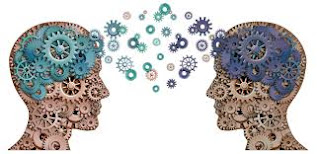15 Knowledge
Management Benefits
- Enabling
Better and Faster Decision Making
By
delivering the relevant information at the time of the needs through the structure,
search, subscription, syndication and support the knowledge management
environment can provide the basis for making a good decision. The collaboration
will bring the power of large numbers, diverse opinion and varied the
experience to bear when decision be based on the actual experience, large
sample size and practical lesson learned.
- Making
it easy to find the relevant information and resources
When
the organizations faced with the need to respond to the customer, solve a problem,
analyse trends, assess markets, benchmark against the peers, understand the
competition, create new offerings, plan strategy and to think critically, you
typically will look for the information and resources to support these
activities.
- Reusing
ideas, documents and expertise
When
the members of your organization have figured out how to solve a common problem
and know how to deliver a recurring the service or have invented a new product,
if the organizations want the same solution, service and the product to be
replicated as much as possible.
- Avoiding
Redundant Effort
Basically,
no one likes to spend doing something over and over again. But they do so all
the time for a variety reason which is in avoiding duplication of effort by
saves time and money will keep the employees morale up and streamlines work. By
not spending time reinventing the wheel, the organizations can have more time
to invent something new.
- Avoiding
Making the Same Mistakes Twice
KM
allows us to share the lesson learned and not only about the success but also
the failures. In order to do that, the organizations must have the cultures of
trusts openness and reward for willingness to talk about right and wrong.
- Taking
Advantage of Existing Expertise and Experience
Teams
benefit from the individual skills and knowledge of each member. The more of
complementary with the expertise of the team members, it will be the greater
the power of the team. In large organizations, there are people with
widely-varying capabilities and backgrounds, and there should be a benefit from
this. But as the number of people increases, it becomes more difficult for each
individual to know about everyone else. So even though there are people with
knowledge who could help other people, they don't know about each other.
- Communicating
Important Information Widely and Quickly
Almost
everyone today is an information worker, either completely or partially. Knowledge
management helps address this problem through personalized portals, targeted
subscriptions, RSS feeds, tagging, and specialized search engines.
- Promoting
Standard, Repeatable Process and Procedures
If
standard processes and procedures have been defined, they should always be
followed. This allows employees to learn how things are done, leads to
predictable and high-quality results, and enables large organizations to be
consistent in how work is performed. By providing a process for creating,
storing, communicating, and using standard processes and procedures, employees
will be able to use them routinely.
- Providing
Methods, Tools, Templates, Techniques and Example
Methods,
tools, templates, techniques, and examples are the building blocks supporting
repeatable processes and procedures. Using these consistently streamlines work,
improves quality, and ensures compatibility across the organization.
- Making
Scarce Expertise Widely Available
If
there is a resource who is in great demand due to having a skill which is in
short supply, knowledge management can help make that resource available to the
entire organization. Ways of doing so include community discussion forums,
training events; ask the expert systems, recorded presentations, white papers,
podcasts, and blogs.
- Showing
Customers How Knowledge is Used for Their Benefit
In
competitive situations, it is important to be able to differentiate yourself
from other firms. Demonstrating to potential and current customers that you
have widespread expertise and have ways of bringing it to bear for their
benefit can help convince them to start or continue doing business with you.
Conversely, failure to do so could leave you vulnerable to competitors who can
demonstrate their knowledge management capabilities and benefits.
- Accelerating
Delivery to Customers
Speed
of execution is another important differentiator among competitors. All other
things being equal, the company which can deliver sooner will win. Knowledge
sharing, reuse and innovation can significantly reduce time to deliver a
proposal, product, or service to a customer. And that translates into increased
win rates, add-on business, and new customers.
- Enabling
The Organization to Leverage its Size
As
an organization grows, the increasing size is only a benefit if it can use the
knowledge of all of its employees. Through the use of tools such as
communities, expertise locators, and repositories, the full power of a large
enterprise can be exploited.
- Making
the Organization Best Problem-Solving Experiences Reusable
Consistently
applying proven practices, also known as best practices or good practices, can
significantly improve the results of any firm. For example, if a manufacturing
plant in one part of the world has figured out how to prevent the need for
product rework, and all other plants around the world adopt this practice,
savings will flow directly to the bottom line. By establishing a process for
defining, communicating, and replicating proven practices, an enterprise takes
advantage of what it learns about solving problems.
- Stimulating
Innovation and Growth
Most
businesses want to increase their revenues, but it becomes increasingly
difficult as industries mature and competition increases. Creating new
knowledge through effective knowledge sharing, collaboration, and information
delivery can stimulate innovation.
If the organization can achieve all this benefits of KM, the organizations should be achieve to growth in the market.
Source from: https://www.linkedin.com/pulse/20140811204044-2500783-15-knowledge-management-benefits








